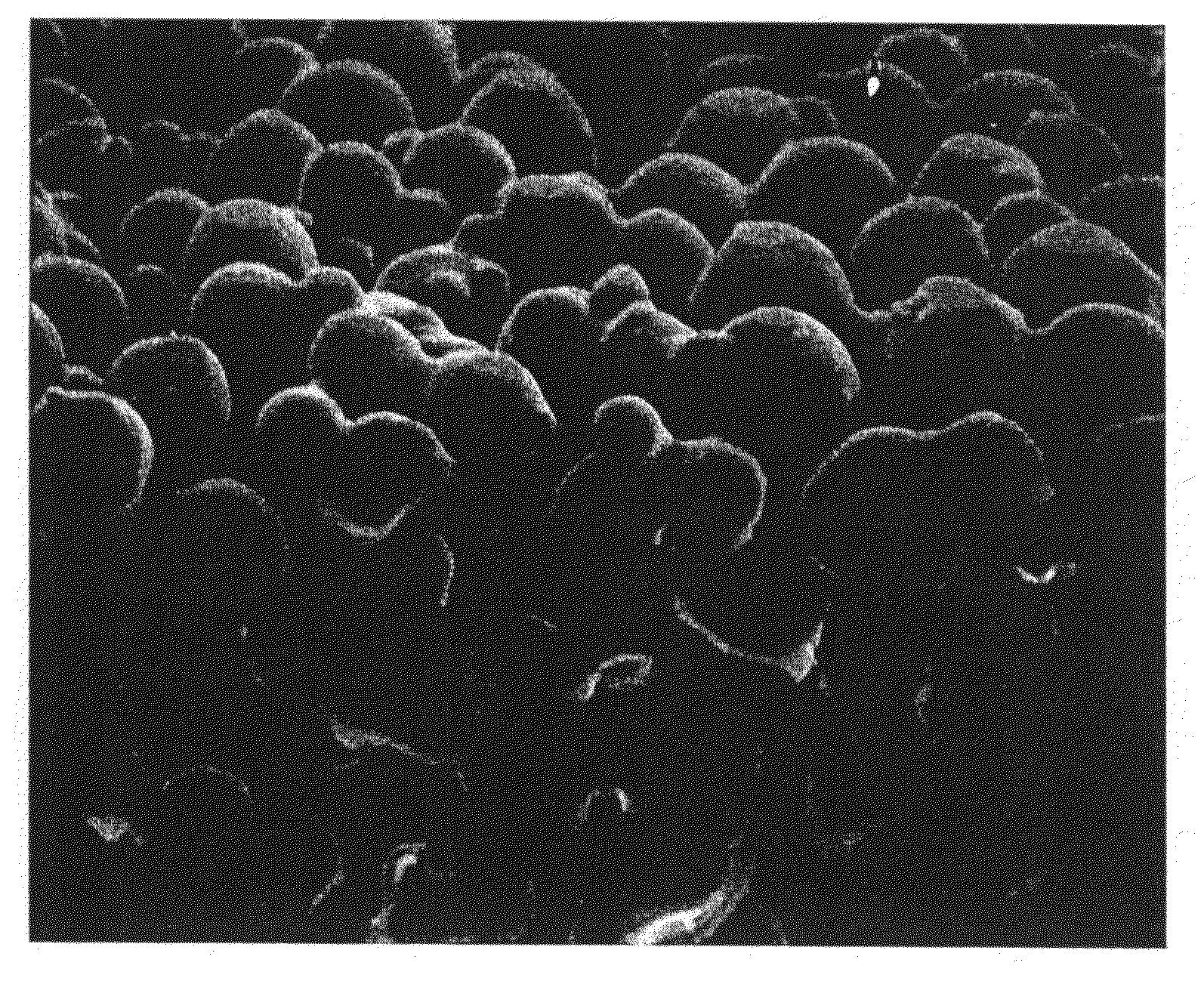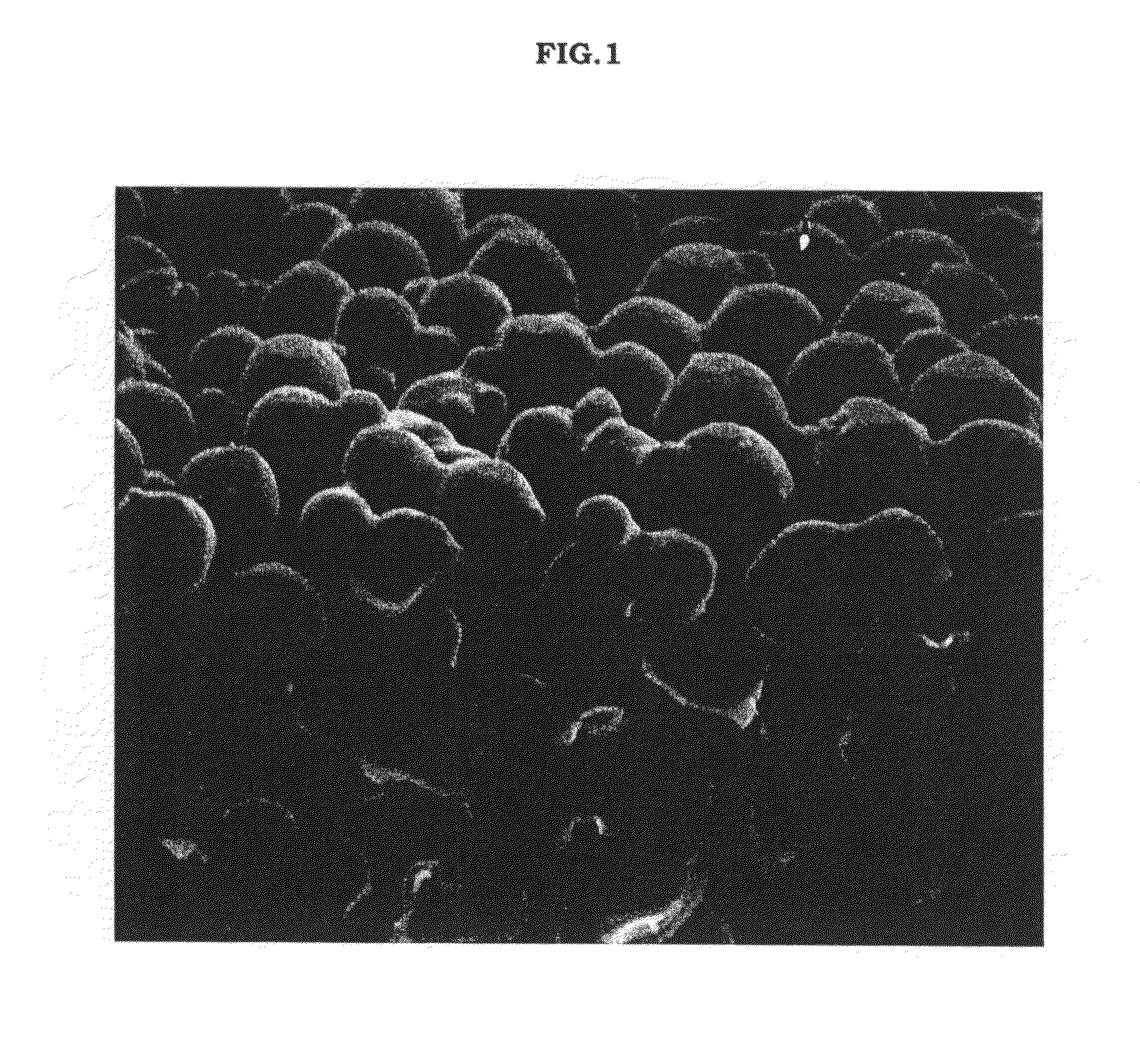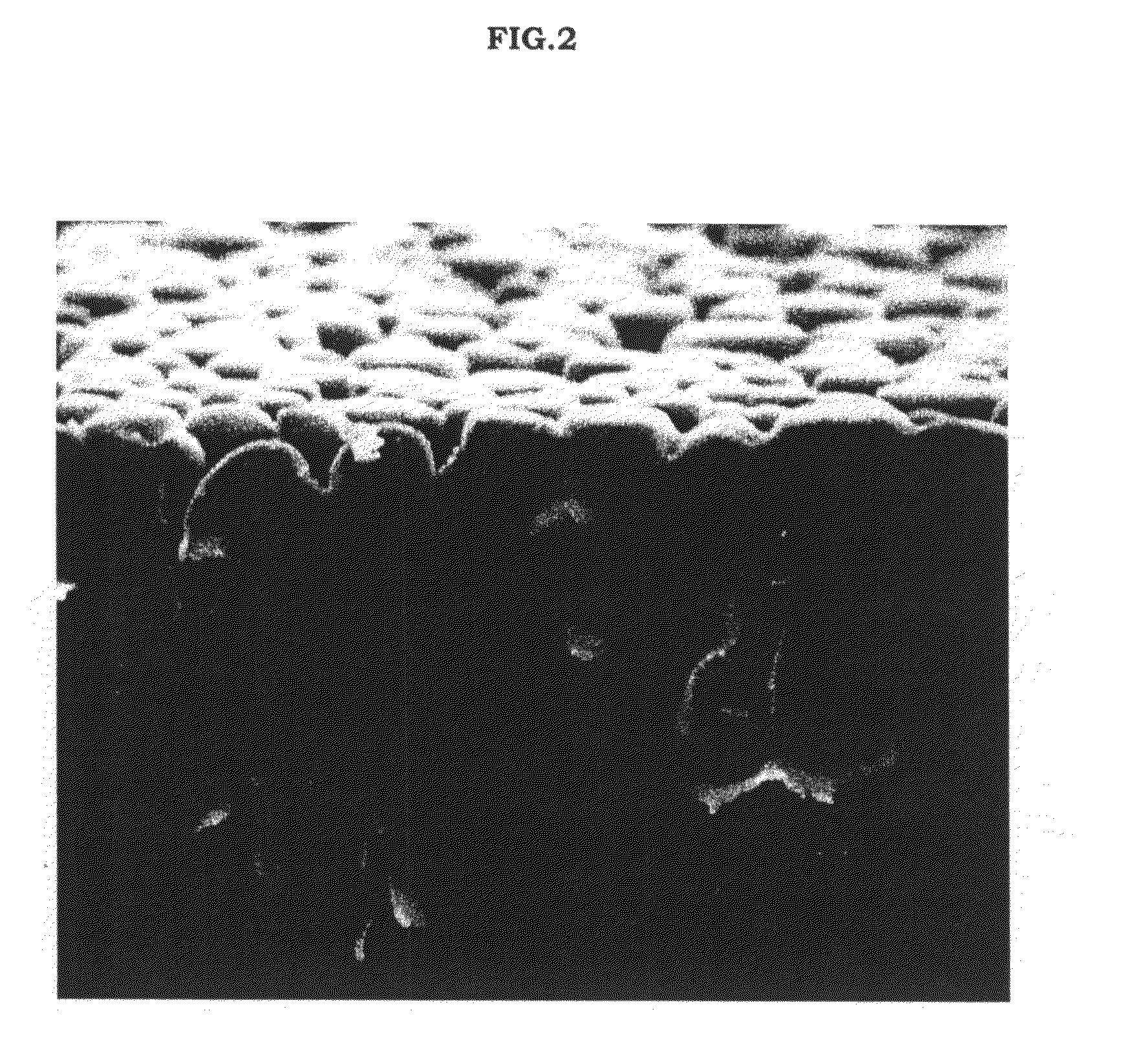Method of producing porous sheet and porous sheet obtained by the production method
- Summary
- Abstract
- Description
- Claims
- Application Information
AI Technical Summary
Benefits of technology
Problems solved by technology
Method used
Image
Examples
example 1
[0051]UHMWPE powder (average molecular weight, 2,000,000; melting point, 135° C.; average particle diameter, 30 μm; particle shape, spherical) was mixed with glycerin and a surfactant to prepare a dispersion. The solid content of the dispersion was 40 vol. %. Subsequently, this dispersion was applied by an applicator onto a PET film (trade name: Lumilar S10, thickness of 100 μm). The thickness of the coating layer (including the solvent) was 250 μm.
[0052]The resulting laminate having the coating layer formed on the PET film was introduced into a drying machine set at 150° C. and then kept still therein for 30 minutes. Thereafter, the laminate was removed and naturally cooled to room temperature. After the PET film was removed therefrom, the coating layer was dipped in ethyl alcohol to extract the dispersing solvent. For more efficient extraction of the dispersing solvent, the coating layer was vibrated with ultrasonic waves. The frequency of the ultrasonic waves was 38 Hz, and the v...
PUM
| Property | Measurement | Unit |
|---|---|---|
| Temperature | aaaaa | aaaaa |
| Thickness | aaaaa | aaaaa |
| Thickness | aaaaa | aaaaa |
Abstract
Description
Claims
Application Information
 Login to View More
Login to View More - R&D
- Intellectual Property
- Life Sciences
- Materials
- Tech Scout
- Unparalleled Data Quality
- Higher Quality Content
- 60% Fewer Hallucinations
Browse by: Latest US Patents, China's latest patents, Technical Efficacy Thesaurus, Application Domain, Technology Topic, Popular Technical Reports.
© 2025 PatSnap. All rights reserved.Legal|Privacy policy|Modern Slavery Act Transparency Statement|Sitemap|About US| Contact US: help@patsnap.com



